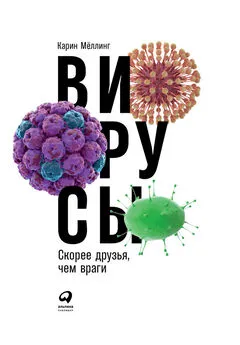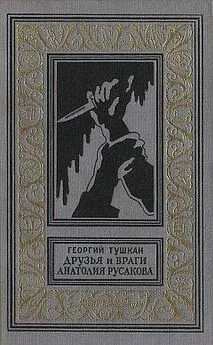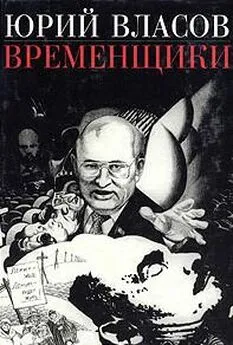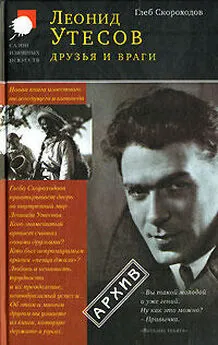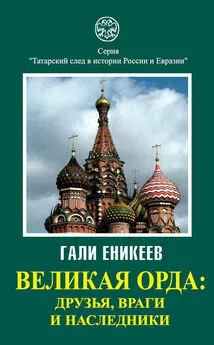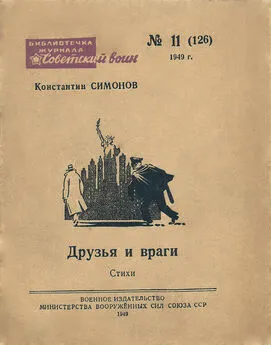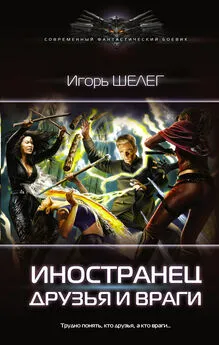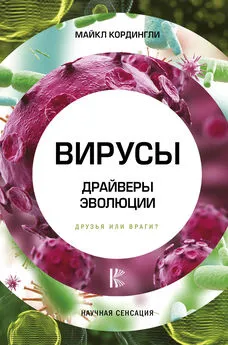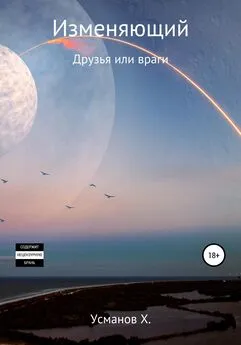Карин Мёллинг - Вирусы: Скорее друзья, чем враги
- Название:Вирусы: Скорее друзья, чем враги
- Автор:
- Жанр:
- Издательство:Альпина Паблишер
- Год:2018
- Город:Москва
- ISBN:978-5-9614-5270-9
- Рейтинг:
- Избранное:Добавить в избранное
-
Отзывы:
-
Ваша оценка:
Карин Мёллинг - Вирусы: Скорее друзья, чем враги краткое содержание
Вирусы есть повсюду: в воздухе, растениях и животных, внутри нас самих и даже на нашей коже. Они борются с бактериями, влияют на погоду, наше самочувствие и настроение, могут способствовать ожирению или лечить от него. Вирусы – часть нашего генома! Они помогли нам стать теми, кто мы есть.
Известная вирусолог Карин Мёллинг описывает невероятный и мало знакомый нам мир вирусов. Из книги вы узнаете о прошлом вирусов, о том, как они помогали людям эволюционировать, и о том, как мы можем использовать их в будущем.
Вирусы: Скорее друзья, чем враги - читать онлайн бесплатно ознакомительный отрывок
Интервал:
Закладка:
Katzourakis, A. et al., Macroevolution of complex retroviruses, Science 2009; 32:1512.
Crippled viruses: Lander, E.S. et al., Initial sequencing and analysis of the human genome, Nature 2001; 409:860.
Cordaux, R. and Batzer, M.A., The impact of retrotransposons on human genome evolution, Nat. Rev. Genet. 2009; 10:691.
SnapSot, Transposons, Cell 2008; 135:192 .
Singer, T. et al., LINE-1 retrotransposons in neuronal genomes? Trends in Neurosciences, 2010; 33:345.
Pollard, K.S. et al., RNA expressed during cortical development evolved in humans, Nature 2006; 443:167.
Finnegan, D.J., Retrotransposons, Current Biol. 2012; 22: R432–7.
McClintock, B.: Harshey, R.M., The Mu story: How a maverick phage moved the field forword, Mobile DNA 2012; 3:21.
Sander, D.M. et al., Intracisternal A-type retroviral particles in autoimmunity, Microsc. Res. Tech. 2005; 68:222 .
Epigenetic Agouti mouse: Dolinoy, D.C. et al., The Agouti mouse model: An epigenetic biosensor for nutritional and environmental alterations on the fetal epigenome, Nutr. Rev. 2008, 66 Suppl. 1: S7–11.
Rassoulzadegan, M., RNA-mediated non-Mendelian inheritance of an epigenetic change in the mouse, Nature 2006; 441:469.
Sleeping beauty: Luft, F.C. et al., Sleeping Beauty jumps to new heights, Mol. Med. 2010; 88:641.
Fish: Amemiya, C.T. et al., African coelacanth genome insights into tetrapod evolution, Nature 2013; 496:311.
Platypus: Warren, W.C. et al., Genome analysis of the platypus unique evolution, Nature 2008; 453:175.
Introns: Morris, K. and Mattick, J.S., The rise of regulatory RNA, Nat. Rev. Genet. 2014; 15:423.
Chabannes, M. et al., Three infectious viral species lying in wait in the banana genome, J. Virol. 2013; 87:8624.
Bartel, D.P., MicroRNAs target recognition and regulatory functions, Cell 2009; 136:215.
Zimmerly, S. et al., GroupII intron mobility, Cell 1995; 82:545.
Beauregard, A., Curcio, M.J. and Belfort M., The take and give RT elements and hosts, Ann. Rev. Genet. 2008; 42:587.
Lambowitz, A.M. and Zimmerly S., Group II introns: Mobile ribozymes in DNA, CSH Perspect. Biol. 2011; 3: a003616.
Galej, W.P. et al., Crystal structure of Prp8 reveals active site of slicosome, Nature 2013; 493:638.
Pena, V. et al., Structure and function of an RNase H at the heart of the spliceosome, EMBO J. 2008; 27:2929.
ENCODE: Biemont, C. and Vieira, C., Junk DNA as an evolutionary force, Nature 2006; 443:521.
Venter, C., Multiple personal genomes await, Nature 2010, 464:676 .
Lev, S. et al., Venter, C., The diploid genome sequence of an individual human, PLoS Biol. 2007; 5: e254.
Fukai, E. et al., Derepression of the plant Chromovirus LORE1 induces germline transposition in regenerated plants, PLoS Genet. 2010; 6(3): e1000868.
RNA: Eigen, M., Error catastrophe and antiviral strategy, PNAS2002; 99:13374.
Biebricher, C.K. and Eigen, M., What is a quasispecies, Curr. Top Microbiol. Immunol. 2006; 299:1.
Biebricher, C.K. and Eigen, M., The error threshold, Virus Res. 2005; 107:117.
Lincoln, T.A. and Joyce, G.F., Self-sustained replication of an RNA enzyme, Science 2009; 323:1229.
Doudna, J.A. and Szostak, J.W., RNA-catalysed synthesis of complementarystrand, RNA Nature 1989; 33:519.
Viroids: Steger, G. et al., Structure of viroid replicative intermediates of PST viroid, Nucl. Acids Res. 1986; 14:9613.
Villarreal, L.P., The widespread evolutionary significance of viruses, Viroids Cell Microbiol. 2008;10:2168.
Cech, T.R. et al., Hammerhead nailed down, Nature 1994; 372:39.
Koonin, E.V. and Dolja, V.V., A virocentric perspective on the evolution of life, Curr. Opin. Virol. 2013; 5:546.
Lambowitz, A.M. and Zimmerly, S., Mobile group II introns, Ann. Rev. Genetics 2004; 38:1.
Adamala, K., Engelhart, A.E., and Szostak, J.W., Generation of functional RNAs from inactive oligonucleotide complexes by non-enzymatic primer extension, J. Am. Chem. Soc. 2015; 137:483–489.
Forterre, P., Defining life: The virus viewpoint, Origins of Life and Evolution of Biospheres 2010; 40:51.
Moelling, K., Are viruses our oldest ancestors? EMBO Reports 2012; 13:1033.
Holmes, E.C., What does virus evolution tell us about virus origins? Journal of Virology 2011; 85:5247.
Plankton: Lescot, M. et al. and Ogata, H., Reverse transcriptase genes are highly abundant and transcriptionally active in marine plankton assemblages, ISME Journal 2015; 1–13.
Circular RNA: Memczak, S. et al., Circular RNAs with regulatory potency, Nature 2013; 495:333.
Hansen, T.B. et al., Natural RNA circles function as efficient microRNA sponges, Nature 2013; 495:384.
Hansen, T.B., Kjems, J., and Damgaard, C.K., Circular RNA and miR-7 in cancer, Cancer Res. 2013; 73:5609.
Ford, E. and Ares, M. Jr., Circular RNA using ribozymes from a T4 group I intron, PNAS1994; 12; 91:3117.
Ribozymes and ribosomes: Wilusz, J.E. and Sharp, P.A., A circuitous route to noncoding RNA. Science 2013; 340:44.
Navarro, B. et al., Viroids: Infect a host and cause disease without encoding proteins, Biochemie 2012; 94:1474.
Hammann, C. and Steger, G., Viroid-specific small RNA in plant disease, RNA Biol. 2012; 9:809.
Bartel, D.P., MicroRNAs target recognition and regulatory functions, Cell 2009; 136:215.
Eilus, J.E. and Sharp, P.A., A circuitous route to non-coding RNA, Science 2013; 340:440.
Proteins: Moore, P.B., and Steitz, T.A., The ribosome revealed, Trends in Biochemical Sciences 2005; 30:28.
Ma, B.G. et al., Zhang, H.Y., Characters of very ancient proteins, BBRC2008; 366:607.
Chaperone: Muller, G. et al., NC protein of HIV-1 for increasing catalytic activity of a ribozyme, J. Mol. Biol. 1994; 242:422.
Clover leaf: Dreher, T.W., Viral tRNAs and tRNA-like structures, Rev. RNA 2010; 1:402.
Hammond, J.A., Comparison and functional implications of viral tRNA-like structures, RNA 2009; 15:294.
Witzany, G. (Editor), Viruses: Essential Agents of Life (Springer 2012), p. 414.
Plant viruses: Eickbush, D.G., Retrotransposon ribozyme and its self-cleavage site, PLoS One 2013; 8(9): e66441.
Webb, C.H. et al., Widespread occurrence of self-cleaving ribozymes, Science 2009; 326:953.
Hammann, C. et al., The ubiquitous hammerhead ribozyme, RNA 2012; 18:871.
Hepatitis delta virus: Braza, R. and Ganem, D., The HDAg may be of human origin, Science 1996; 274:90.
Taylor, J., and Pelchat, M., Origin of hepatitis delta virus, Future Microbiol. 2010; 5:393.
Flores, R., Ruiz-Ruiz, S. and Serra, P., Viroids and hepatitis delta virus, Semin-Liver Dis. 2012; 32:201.
Retrophage: Liu, M. et al., Bordetella bacteriophages encoding RT-mediated tropism-switching, J. Bacteriol. 2004; 186:1503.
Doulatov, S. et al., Tropism switching in Bordetella bacteriophage by diversity-generating retroelements, Nature 2004; 431:476.
Tobacco viruses: Buck, K.W., Replication of tobacco mosaic virus RNA, Philos. Trans. R. Soc. Lond. B. Biol. Sci. 1999; 354:613 .
Beijerinck, M.W., Contagum vivum fluidum of tobacco leaves, Phytopathol Classics No. 7, ed. Johnson, J., Am. Phyto. Soc., 1898.
Dreher, T.W., Viral tRNAs and tRNA-like structures, Rev. RNA 2010; 1:402.
Hammond, J.A. et al., 3D architectures of viral tRNA-like structures, RNA 2009; 15:294.
Apple tree: Mitrovic, J. et al., Sequences of Stolbur phytoplasma from DNA, Mol. Microbiol. Biotech. 2014; 24:1.
Georgiades, K. et al., Gene gain and loss events in Rickettsia and Orientia species, Biol. Direct 2011; 6:6.
Plants: Roossinck, M.J., Lifestyles of plant viruses, Philos. Trans. R. Soc. Lond. B. Biol. Sci. 2010; 365:1899.
Geminiviruses: Krupovic M. et al., Geminiviruses: A tale of a plasmid becoming a virus, BMC Evol. Biol. 2009; 9:112.
Tulipomania: Lesnaw, J.A. and Ghabrial, S.A., Tulip breaking: Past, present and future, Plant Disease 2000; 84:1052.
Murray, J.D., How the leopard gets its spots, Sci. Am. 1988; 3:80–87.
Interferon: McNab, F. et al., O’Garra, A., Type Interferons in infectious disease, Nat. Rev. Immunology 2015; 15:87–103.
siRNA: Baulcombe, D.C. and Dean, C., Epigenetic regulation in plant to the environment, CSH Pers.Biol. 2014; 6(9): a019471.
Wilson, R.C. and Doudna, J.A., Molecular mechanisms of RNA interference, Annu. Rev. Biophys. 2013; 42:217.
Moelling K., Matskevich A., and Jung J. S., Relationship between retroviral replication and RNA interference, CSH–SyQB2006; 71:365–8.
Matskevich, A. and Moelling, K., Dicer is involved in protection against influenza A virus infection, J. Gen. Virol. 2007; 88:2627–35.
Song J. J., et al., The crystal structure of the Argonaute2 PAZ domain reveals an RNA binding motif in RNA effector complexes, Nat. Struct. Biol. 2003; 10:1026–32.
Nowotny, M., Retroviral integrase superfamily: The structural perspective. EMBO Reports 2009; 19:144–151.
Nasir, A. and Caetano-Anolles, G., Origin of viruses and their impact on cellular evolution, Ann. N. Y. Acad. Sci. 2015; 1341:61.
Moelling, K. and Broecker, F., The RT-RNase H: From viruses to antiviral defense, Ann. N. Y. Acad. Sc i. 2015; 1341:126–35.
Orsay virus: Sterken, M.G. et al., A heritable antiviral RNAi response limits Orsay virus infection, PLoS One 2014; 9(2).
CRISPR/Cas9: Doudna, J.A. and Charpentier, E., Genome editing. The new frontier of genome engineering with CRISPR-Cas9, Science 2014; 346 (6213):1258096.
Jinek, M. et al., Structures of Cas9 endonucleases, Science 2014; 343, 1247997.
Hsu, P.D., Lander, E.S., and Zhang, F., Development and applications of CRISPRCas9 for genome engineering, Cell 2014; 157:1262.
Barrangou, R. and Marraffini, L.A., CRISPR-Cas systems: Procaryotes to adaptive immunity, Review Mol. Cell. 2014; 54:234.
Krupovic, M. et al., Casposons: Self-synthesizing DNA transposons of CRISPR-Cas immunity, BMC Biology 2014; 12:36.
Horvath, P. and Barrangou R., CRISPR/Cas9, the immune system of bacteria and archaea, Science 2010; 327:167.
Swarts, D.C. et al., DNA-guides DNA interference by a procaryotic Argonaute, Nature 2014; 507:258.
Moelling, K. et al., Silencing of HIV by hairpin-loop DNA oligonucleotide (siDNA), FEBS Letters2006; 580:3545.
Zhou, L. et al., Transposition of hAT elements links TE and V(D)J recombination, Nature 2004; 432:995 .
Bateman, A., Eddy, S.R., and Chothia, C., Members of the immunoglobulin superfamily in bacteria, Protein Sci.1996; 5:1939.
Beauregard, A., Curcio, M.J. and Belfort M., The take and give between TE, Annu. Rev. Genet. 2008; 42:587.
Antisense: Isselbacher, K.J., Retrospective: Paul C. Zamecnik (1912–2009), Science 2009; 326:1359.
Citron, M. and Schuster, H., The c4 repressors of bacteriophages P1 and P7 are antisense RNAs, Cell 1990; 62:591.
Reardon, S., Phage therapy gets revitalized, Nature 2014; 510:15.
Young, Ry. and Gill, J.J., Phage therapy redux – What is to be done? Science 2015; 350:1163.
Viertel, T.M., Ritter, K. and Horz, H.P., Phage therapy against MDR pathogens, J. Antimic. Chemother. 2014; 69:2326–36.
Phagoburn: EU program: The main objective of Phagoburn is to assess the safety, effectiveness and pharmacodynamics of two therapeutic phage cocktails to treat either E. coli or P. aeruginosa burn wound infections, 2013–2016.
Vanessa, K. et al., Gut microbiota from twins discordant for obesity, Science 2013; 341:1079.
Multiresistant bacteria: Nьbel, U., MRSA transmission on a neonatal intensive care unit, PLoS One. 2013;8(1): e54898.
Stower, H., Medical genetics: Narrowing down obesity genes, Nat. Med. 2014;20:349.
Читать дальшеИнтервал:
Закладка:
